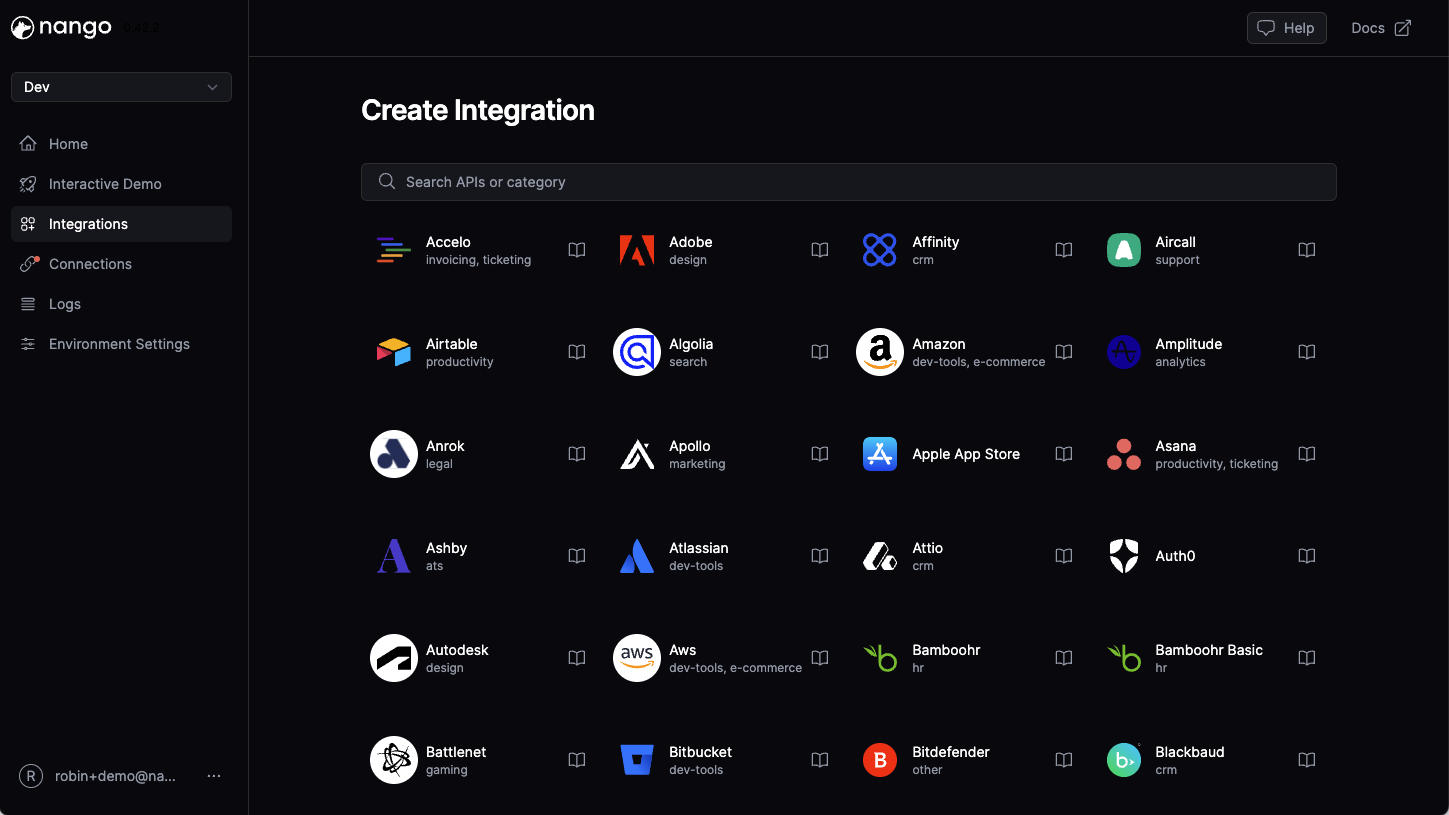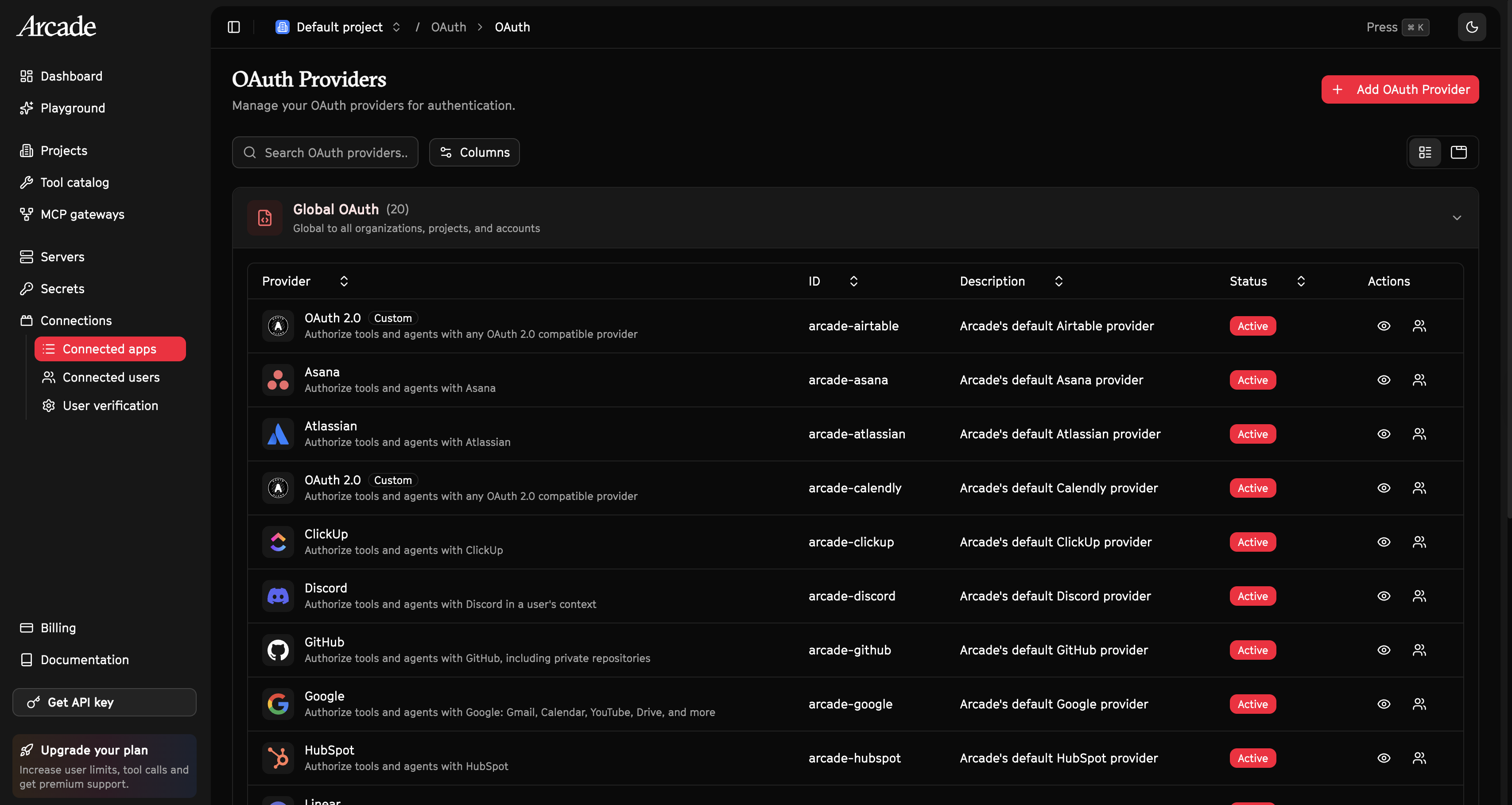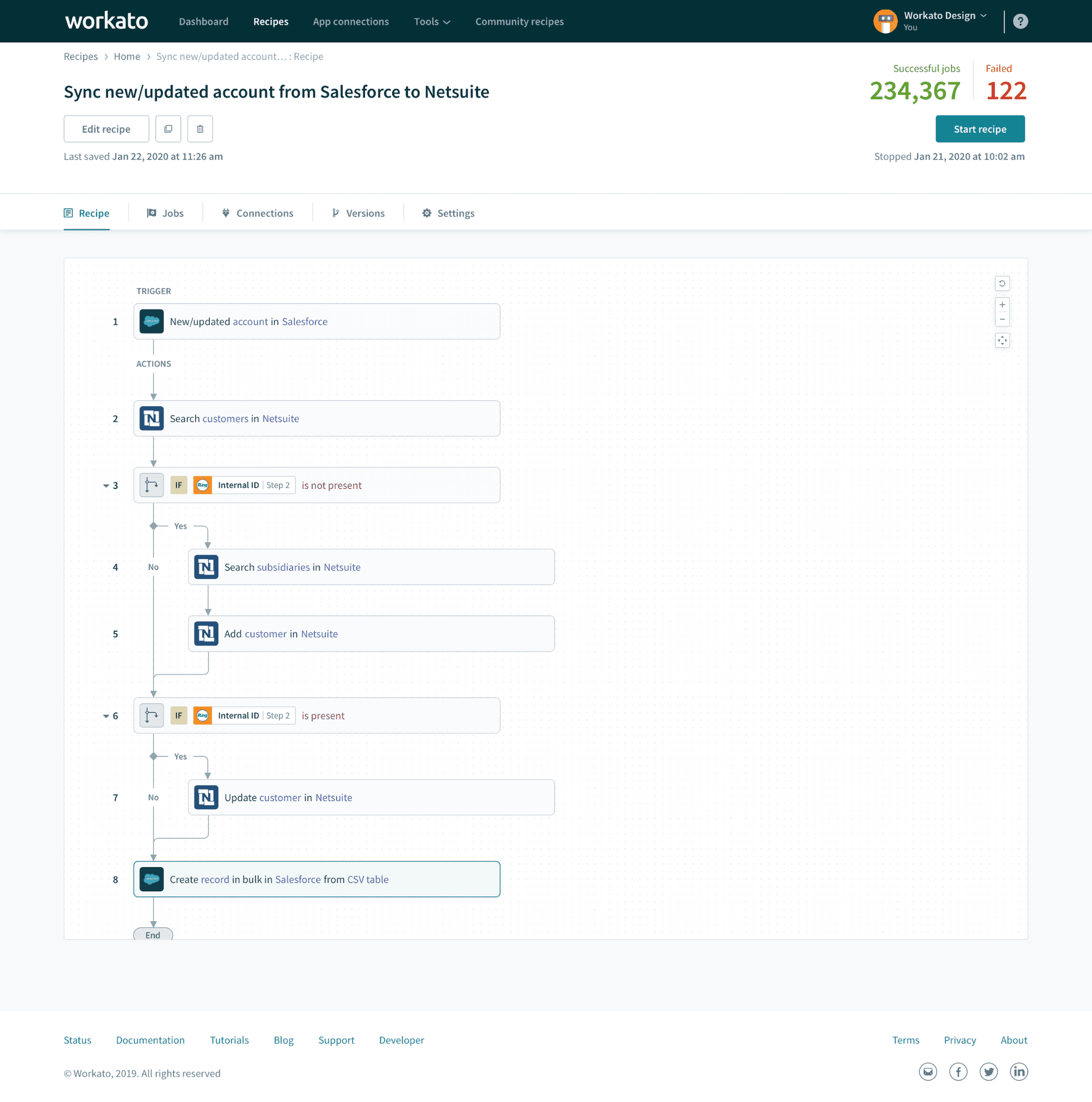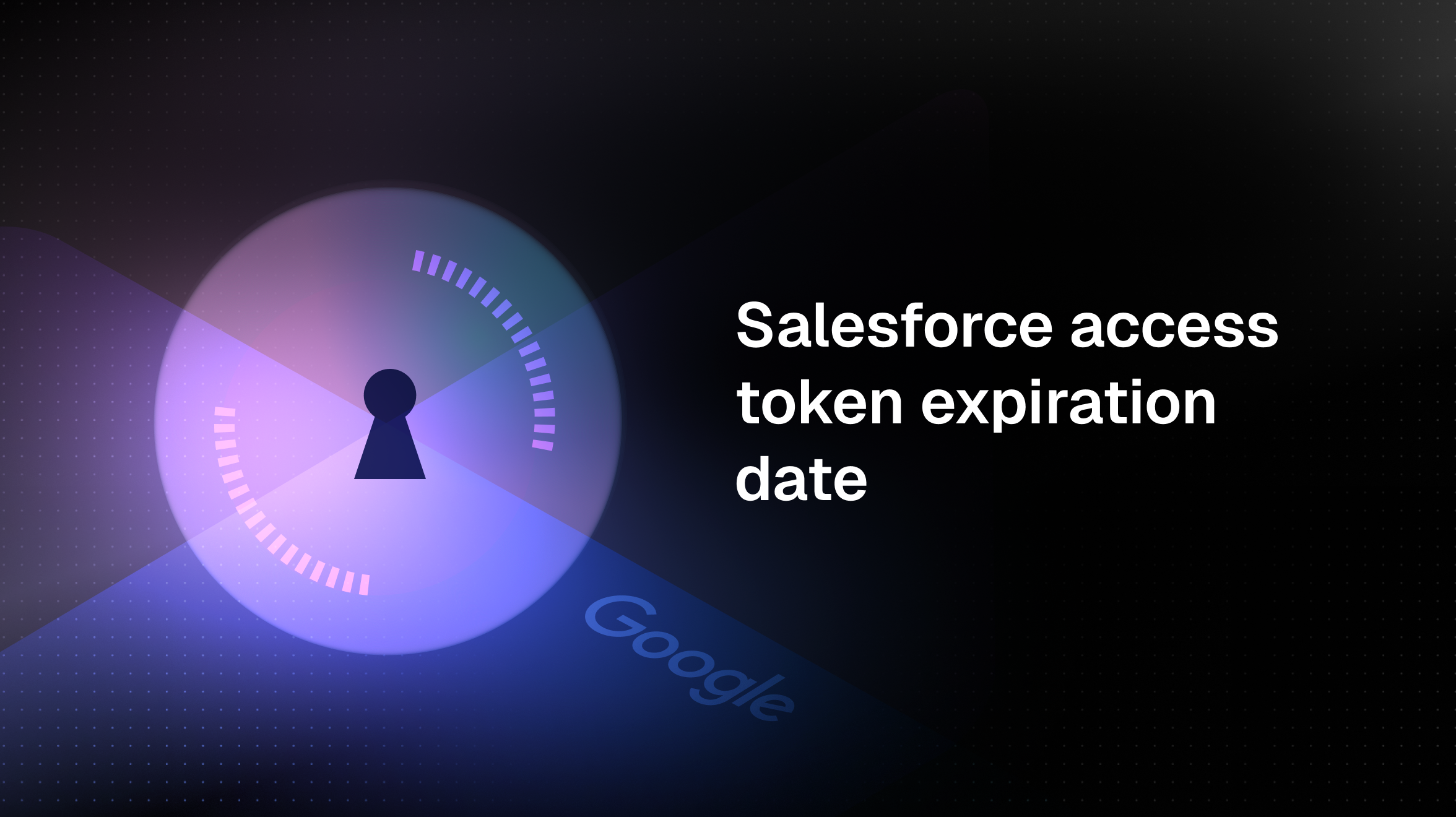Best AI agent integration platforms to consider in 2025
We evaluate the top AI agent integration platforms with detailed pros & cons.
AI agent tool calling lets agents reliably interact with external APIs. Picking the right platform impacts reliability, latency, scalability, and observability. This guide outlines what to look for and the best platforms to consider.
What are AI agent integration platforms?
These platforms provide the infrastructure and tooling to connect agents to external APIs with guardrails. They handle authentication, tool execution, permissions, and logging so agents can call tools deterministically with clear inputs/outputs instead of crafting raw API calls.
In practice, this means:
- Authentication across many APIs: OAuth, API keys, and basic auth with a clear user experience and the right scopes.
- Type-safe tool interfaces: Strict input/output schemas so agents don’t guess parameters or chain multiple API calls to accomplish a task.
- Guardrails and permissions: Controls to prevent arbitrary or unsafe requests.
- Deep observability: Request-level logs and error details so developers can quickly diagnose issues.
Key features to look for
- Broad API coverage and extensibility: A large catalog of supported APIs and the ability to add new ones as you need them.
- Custom tools and code extensibility: Customize existing tools and add fully custom tools in your codebase.
- Low overhead and scalable runtime: Minimal latency, per-customer isolation, and auto-scaling for spikes.
- Deep, real-time observability: Full logs of external API requests, error details, custom log messages, and OpenTelemetry export.
- Robust authentication: White-label OAuth and API key flows, custom credential validation, and end-user guides.
- First-class tool calling: Support for standard protocols (e.g., MCP), type-safe schemas, and deterministic execution.
- Developer workflow: Unlimited environments, CI/CD-friendly deployments, and quick iteration without changing your core process.
Best AI agent integration platforms
You might want to consider the following three AI agent integration platforms for your product integrations.
Nango
Nango is a developer-first platform for product integrations and agent tools.
It supports tool calls, data syncs, webhooks, and unified APIs—giving teams a single platform for both agentic and deterministic integrations.
Nango is built around a code-first experience, strong observability, and a scalable infrastructure designed for production workloads.
Nango supports over 500 APIs out of the box and is trusted by hundreds of fast-growing AI companies.

Pros
- White-label auth across 500+ APIs: Includes a drop-in UI, advanced features like custom credential validation, and end-user guides that reduce friction.
- Scalable runtime with low overhead: Nango adds less than 100ms overhead to tool calls, isolates each customer’s executions, and auto-scales for spikes (e.g., webhook floods).
- Code-first workflow: Tool definitions live in your repo and fit within your existing development workflow. Use any IDE or AI coding assistant and manage deployments via CI/CD with unlimited environments.
- Deep, real-time observability: Every operation generates detailed logs, including external API requests and error details. You can add custom log messages and export everything via OpenTelemetry.
- Beyond tool calls: Besides agent tool calling, Nango handles 2-way data syncs, unified APIs, webhook processing, and per-customer configuration—useful for products that need more than one integration pattern.
- Enterprise-grade: SOC 2 Type II, GDPR, HIPAA, and options for enterprise self-hosting.
When should you pick Nango?
Choose Nango if integrations are central to your product and you want a code-first workflow with deep control. It also works well if you need more than just tool calls (e.g., data syncs or a custom unified API).
The scalable infrastructure with minimal overhead makes it ideal for high scale production use cases, or latency sensitive applications such as voice agents.
Many Enterprises pick Nango for it's mature self-hosted offering and high compliance standards.
Arcade
Arcade is a platform focused on AI agent tool calling using the Model Context Protocol (MCP). It provides a pre-built catalog of tools and an SDK for building custom tools and custom MCP servers, along with advanced testing/evaluation features to assess agent behavior.

Pros
- Dedicated tool execution engine: Executes tool calls via MCP for consistent behavior and standardization across tools.
- Custom tools and custom MCP servers: Developers can use Arcade’s SDK to build both custom tools and entire MCP servers that run on the Arcade runtime.
- Community contributions: Arcade enables community-submitted MCP servers, which can expand coverage and address niche use cases.
- Robust testing and evaluations: Define test scenarios, assess, and score agent behavior to quantify tool performance before going to production.
- Automatic permission checks: The platform checks end-user permissions ahead of execution and prompts for additional authorizations when needed.
Cons
- Smaller out-of-the-box catalog: As of writing, Arcade lists tools for around 21 APIs, limiting immediate breadth.
- Mixed connector quality risk: Community-contributed MCP servers can be powerful but may lead to variability in quality.
- Tool-calling focus: Arcade is primarily focused on tool calls and offers fewer capabilities for other integration patterns like data syncs or unified APIs.
When should you pick Arcade?
Pick Arcade if your team is MCP-first and wants strong testing, permission automation, and the flexibility to build advanced custom MCP servers.
Workato
Workato is an enterprise iPaaS that also offers “Workato Enterprise MCP,” which exposes collections of workflows (recipes) to AI agents via MCP. It emphasizes governance, auditing, and centralized management—particularly useful for internal, employee-facing tool use.

Pros
- Large catalog and pre-built MCP servers: Workato offers 100+ pre-built MCP servers and a broad set of workflow building blocks for rapid experimentation.
- Comprehensive auditing and governance: Detailed logging of tool executions makes it straightforward to monitor for suspicious or problematic activity.
- Agent builder platform: Workato’s agent builder integrates with Enterprise MCP, allowing centralized administration of tools, access controls, and metadata.
- Enterprise maturity: Strong presence in large organizations and a proven security posture.
Cons
- Low-code-first: The experience is optimized for low-code workflows, which can feel restrictive for teams that prefer code-first development.
- Limited customization of pre-built components: Deep changes to pre-built recipes/connectors often require creating new ones from scratch rather than extending existing ones.
- Internal-use orientation: Best aligned with internal, employee-facing use cases rather than deep, code-first product integrations.
When should you pick Workato?
Consider Workato if you’re already invested in its ecosystem or need strong governance and auditing in an enterprise context. Especially when agent tools are primarily for internal users and administrators rather than customer-facing product integrations.
Final thoughts
Choosing the right AI agent integration platform is critical to delivering reliable, scalable agent experiences. If you need deep control, performance, and visibility with a code-first workflow Nango offers the most complete solution. If your focus is MCP-first tool calling with advanced testing and permission automation, Arcade is worth a close look. For enterprises consolidating on a mature platform with strong governance and internal use cases, Workato can be a pragmatic choice. For a comparison of embedded platforms for product integrations, see our best embedded integration platforms.
As you evaluate options, weigh extensibility (custom tools and workflows), observability (request-level logs and OpenTelemetry), and long-term scalability (performance, isolation, environments). For deeper dives into related topics, you may also find these analyses helpful:
- Best practices for AI agent authentication platforms
- Top Composio alternatives for AI agents
- Best Pipedream Connect alternatives for AI integrations





